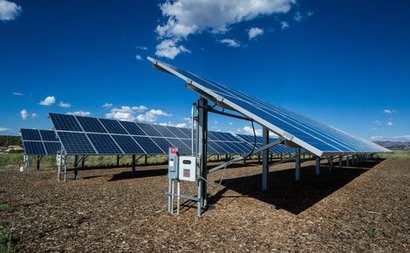
The study states that the transition is stalling, and the country is not on track to meet either its legally binding 2050 decarbonization targets or its Nationally Determined Contribution (NDC) commitment of reducing emissions by 68 percent by 2030 under the Paris Agreement.
Independent energy expert and assurance provider DNV forecasts show that the UK's annual emissions will amount to some 125 million tonnes of carbon dioxide equivalent (MtCO2e) in 2050, and while this represents a significant 85 percent reduction relative to 1990 levels, it is not the 100 percent reduction by mid-century that the UK has legislated for.
DNV determines that with the right incentives, the transition can still be accelerated through swift deployment of technologies such as wind, solar PV, smart grids, electric vehicles, but also mitigating technologies as CCS and hydrogen.
The UK hydrogen market is in particular need of significant support. The report outlines that by 2030, hydrogen production will reach 1Mtonnes/yr, only 60 percent of which will be low carbon, equivalent to roughly 5 GW of low carbon hydrogen versus the government target of 10 GW.
“The evidence in our 2024 UK ETO is clear – without immediate action the UK will fail to deliver on its climate commitments, fall behind in the global race to decarbonise and miss out on many of the benefits that switching to a low-carbon system will bring” said Hari Vamadevan, executive vice president and regional director, UK & Ireland, Energy Systems at DNV. “But, by putting the correct policy levers in place, there is still time for industry and government to deliver a transition that is good for business, good for consumers and good for the planet.”
DNV recommends the UK Government adopt a 'whole systems' thinking approach to the energy transition and act across all its dimensions to counter system inertia.
On the supply side, policy makers should provide clear incentives to crowd in private capital for buildout of green generation, and on the transmission and distribution side they should facilitate planning and permitting for delivery of critical infrastructure. At the same time there is a need for extensive engagement on the demand side with society at large to embed low carbon solutions and, additionally, ensure a just transition by ensuring downside social impacts are minimized.
DNV forecasts annual energy infrastructure CAPEX spend to increase from an annual average of £26 billion in previous decades to around £38 billion per year over the next 30 years. While this is a significant increase in absolute terms, the share of GDP devoted to energy CAPEX expenditure remains relatively stable at just above 1 percent of GDP across the 2000-2050 period.
There will be big wins for the British public though and the transition means domestic consumers will benefit from an almost 40 percent reduction in household energy costs by 2050, when compared with 2021 prices. DNV concludes that the decarbonisation of the UK economy is affordable, with a substantial green prize awaiting households in the form of cleaner, more efficient and less expensive energy.
Currently, close to 80 percent of all UK primary energy comes from fossil fuels, of which just over 50 percent is produced nationally, with renewables (13 percent) and nuclear energy (7 percent) covering the remaining share. Even with the expected build-out of renewables, this heavy reliance on fossil fuels will remain for the next decade, only reducing to 70 percent by 2031.
However, by 2050 this picture will be significantly different with low-carbon supply sources meeting nearly 65 percent of the UK energy needs. More than half of that will be via variable renewables - wind and solar - with and the remainder split between bioenergy and nuclear.
For this, it is imperative that there is a step-change in historical electrical grid investment levels to ensure the grid will be the enabler, not the blocker, of the energy transition. This will require an overhaul of the way networks are planned, built, and operated. Crucially, policy makers and regulators need to accept that the levels of risk associated with delivering this step-change will be different from risks that were previously deemed acceptable.
“The required climate objectives and decarbonisation targets are in place, but the onus is on the UK Government to put a clear, ambitious strategy in place to make them a reality” added Mr Vamadevan. “What the UK desperately needs is a detailed transition roadmap to chart the country's journey to the low-carbon energy system of the future – only then can businesses invest with confidence to drive the energy transition. The UK Government has always claimed to be a leader in the global net zero transition; now it is time to deliver on those claims. The ball is in the court of the policymakers.”
Energy leaders, government officials and representatives from a wide array of trade bodies will meet in London today (22nd Feb ) for the launch of the 2024 UK ETO. A panel comprised of Viken Chinien, VP – Enterprise Risk Management DNV; Hannah Bronwin, Director of Business Development, SSE Thermal; Owen Bellamy, Team Leader, Energy Supply Decarbonisation and Resilience, Climate Change Committee; Harry Manisty, Investment Director, Octopus Energy Generation; Dean Cooper, Global Energy Lead, WWF; Clara Barby CBE, Senior Partner, Just Climate; and moderated by Lucy Siegle, British journalist and writer on environmental issues, will discuss the actions that need to be taken in order to give the low-carbon transition fresh impetus.
For additional information:

